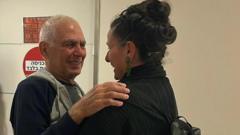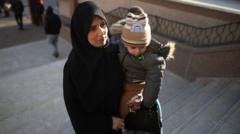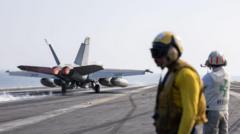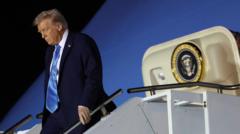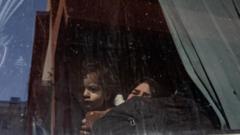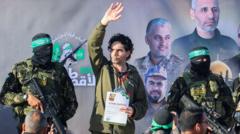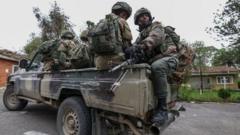As ceasefires in Lebanon and Gaza appear increasingly tenuous, recent clashes have left dozens dead and many awaiting uncertain returns to their homes. Israeli forces challenge conditions set by Hamas, while Hezbollah grapples with political momentum amidst Israeli occupation.
Tensions Escalate as Ceasefires in Lebanon and Gaza Show Signs of Collapse

Tensions Escalate as Ceasefires in Lebanon and Gaza Show Signs of Collapse
The fragile standstill between Israel, Hezbollah, and Hamas comes into focus amid renewed violence and disputes over terms of ceasefires.
The cease-fires in Lebanon and Gaza are increasingly at risk following Palestinian casualties and tensions over adherence to agreements. This Sunday, Israeli military operations in southern Lebanon resulted in the deaths of at least 22 individuals and injuries to over 120 others, according to local health officials. This grim statistic marks the most violent day since the cease-fire with Hezbollah was established.
As warring factions grapple with their next moves, the situation remains fraught in both regions. In Lebanon, Israeli forces have remained beyond a 60-day withdrawal deadline, opening fire on civilians trying to return home. In Gaza, Israeli troops are preventing displaced Palestinians from moving north, claiming that Hamas has breached the cease-fire established last week. Concerns are emerging that the ongoing hostilities could lead to further escalations.
Despite the precarious nature of these cease-fires, all involved parties seem to hold an interest in maintaining the shaky peace, contingent, however, on the adversaries’ compliance with the agreed terms. The Lebanese military reports accompanying civilians back to their towns, hoping to ensure their security, even as fears of renewed violence loom large.
Amid these tensions, displaced Palestinians express deep anxieties over when they can safely return to their homes in northern Gaza. Israel has withheld permission for their movement, alleging violations by Hamas concerning the terms of the cease-fire. Many displaced families anxiously await resolution, particularly regarding hostages and the reopening of crucial corridors.
The political landscape in Lebanon further complicates matters as new leaders face monumental tests stemming from the Israeli occupation. The recent election of President Joseph Aoun presents an opportunity to challenge Hezbollah's long-standing hold in Lebanese politics. However, experts caution that any prolonged Israeli presence could revitalize Hezbollah's support base, reviving tensions previously thought to be diminishing.
As clashes continue, prominent figures, including Israeli Prime Minister Benjamin Netanyahu and French President Emmanuel Macron, engage in dialogues centered on current developments, hoping to mitigate the growing crisis. The United Nations peacekeeping forces in Lebanon have also issued a stark warning against the risk of escalating violence, underscoring the delicate balance sought by all parties involved.
In both Lebanon and Gaza, the situation remains fluid and uncertain, as civilians bear the brunt of the ongoing conflict, struggling to navigate an ever-changing landscape of danger and hope for a return to normalcy amidst trauma and destruction.

